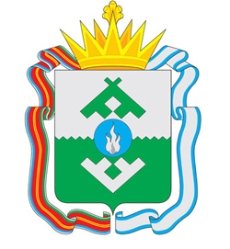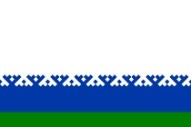The natural conditions of the okrug are primarily affected by its location in the cold Arctic zone. Two climatic regions are distinguished: the polar (southern part of the okrug's territory) and subarctic (northern and eastern parts). The average temperature in January is from −12 ° C in the southwest to −22 ° C in the northeast; the average temperature in July is from +6 ° C in the north to +13 ° C in the south. Permafrost occupies almost the entire central and northeastern parts of the okrug.
There are up to 100 sunny days a year. Fogs are often observed: from 64 to 100 days a year on the coast and from 37 to 72 days inland.
The Nenets okrug is subject to systematic invasion of Atlantic and Arctic air masses. Frequent change in air masses is the reason for the constant variability of the weather. In winter and autumn, winds with a southern component prevail, and in summer, north and north-east, due to the invasion of cold Arctic air on a heated continent, where atmospheric pressure at this time is lowered.
The entire territory of the district is located in the zone of excessive moisture. Annual precipitation ranges from 400 mm (on the coasts of the seas and Arctic islands) to 700 mm. The minimum rainfall is observed in February, the maximum - in August-September. At least 30% of the precipitation falls in snow.
The average duration of thunderstorms is 10-20 hours per year in the west, east and south of the district. In the north of the district - less than 10 hours a year.
According to wind pressure, the district belongs to the IV district (800 Pa) in the south; V district (1000 Pa) in the northern part; VI district (1250 Pa) on the islands of Kolguev and Vaigach, as well as on the Kanin Peninsula.
By the thickness of the wall of ice, the okrug belongs to the II district (15 mm) in the east and west; III district (20 mm) on the islands of Kolguev, Vaigach and the Kanin Peninsula; District IV on the territory of the Pai Khoi ridge.
Relief:
The main part of the district has a flat relief. Almost 90% of the plains lie within the altitudes of up to 100 meters above sea level; as a result, the district is replete with small lakes (connected by short channels) and swamps (10-20% of the territory). Among the prominent hills are the Timan Ridge and the Pai-Khoi Ridge (height up to 467 m). The main river of the region is Pechora and its tributaries. A characteristic feature of the area is a small proportion of groundwater (less than 5-10% of the water balance of the territory).
In view of the listed natural features, the entire territory of the Nenets Autonomous Area has a vulnerable, extremely sensitive, difficult and slowly recovering ecosystem.


